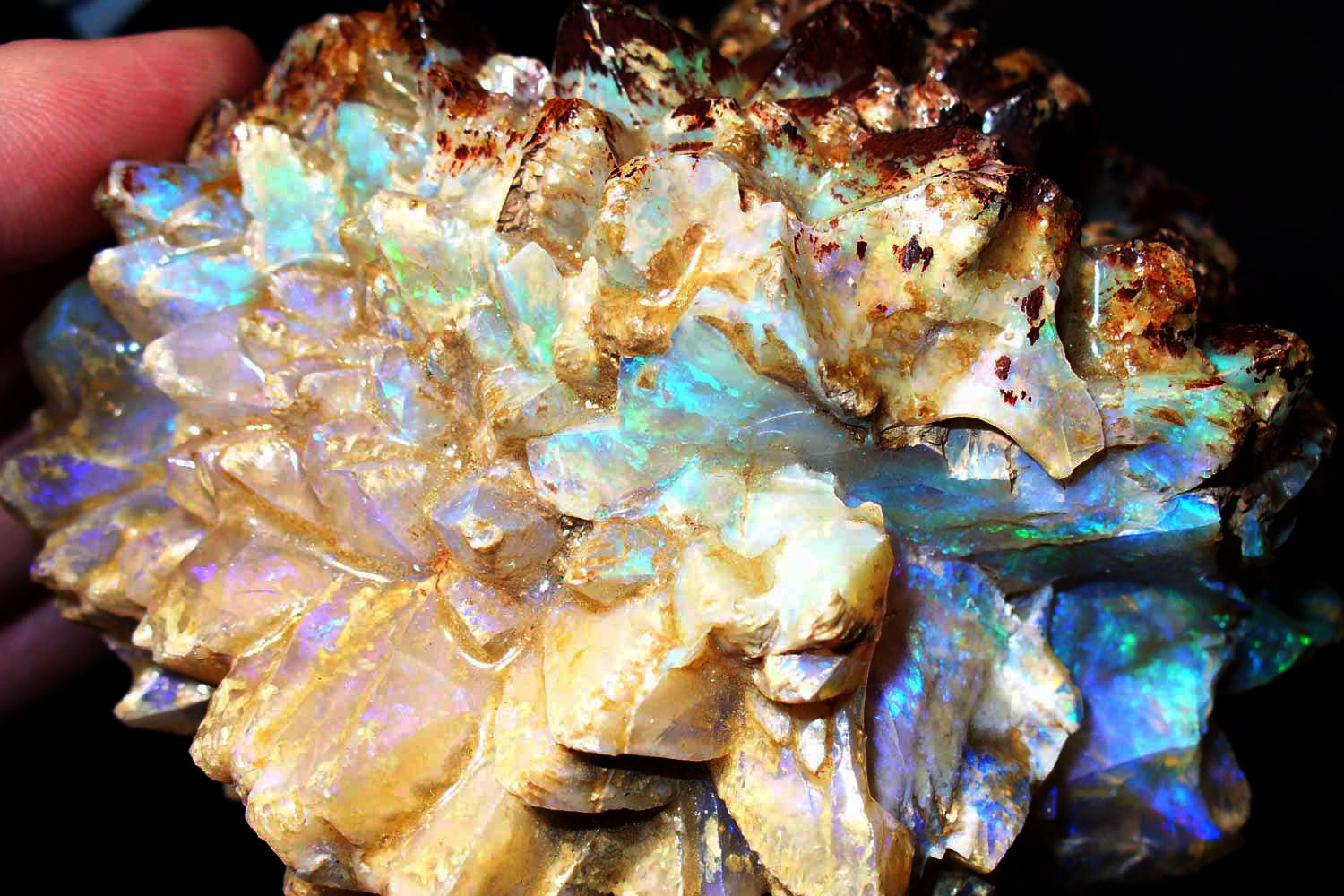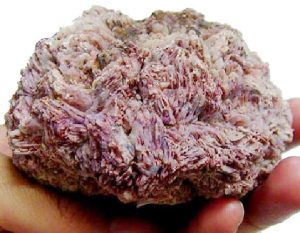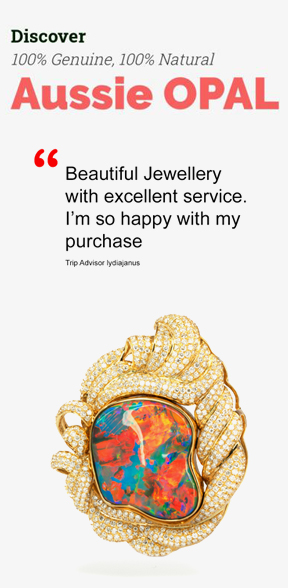Part 4-Fossilized Opal
Fossilized Opal
The formation of opal fossils began when marine life was buried below sand and silt at the bottom of the inland sea which covered much of southern and eastern Australia thousands of years ago. When the marine life decayed after many years below the earth’s surface it left cavities that were later filled with the silica rich waters from the inland sea that produced today’s fossil opal. Shells of stranded marine creatures, prehistoric animal bones and even stems of plants have been left opalised. Many opals have been found in Lightning Ridge becoming known as Black Opal fossils.
In those that are pseudomorphs, the silica has filled a simple cavity or void, like jelly in a mould, so that only the basic shape and perhaps the surface texture are preserved. However, many specimens are replacement fossils, in which intricate internal structures have been preserved by chemical alteration before the cavity was filled by the silica solution.
Although the transformation to silica has destroyed biomolecular evidence, marrow tissue, blood vessels, capillaries and nerve channels may be perfectly preserved. If the potch is transparent, these features are clearly visible below the surface in opalised bones. A surprising aspect is the opalisation of delicate materials like leaves and even dinosaur skin. Many pieces resemble coprolites, reptilian armour scutes or heavy scales; very occasionally, bone specimens seem to show remnants of tendons or cartilage.
FOSSILS MADE OF OPAL
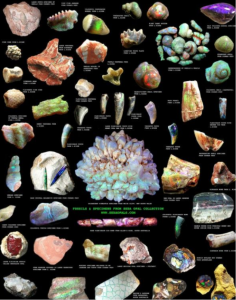 Fossils are a unique topic. Although they are widely known and seen throughout the media, they are often left undiscussed, and therefore not truly understood.
Fossils are a unique topic. Although they are widely known and seen throughout the media, they are often left undiscussed, and therefore not truly understood.
Their existence can hold a key aspect of the past, lending knowledge to current generations that would not have been found otherwise. They are the remains (or sometimes, merely impressions) of once-living organisms that have been preserved in rock, only to be discovered years later. Occasionally, once this discovery is made, it is discovered that the remains have been opalised! This is a process in which the cavities within the fossil act like regular crevices within the ground, allowing for the spaces between organic molecules to become filled with either dazzling colour (transforming the opal into an actual gemstone), or creating the more commonly found ‘potch’ (a substance which opal is found on, often regarded as ‘common opal with no colour’).
What is fascinating is that, sometimes, the opal is seen to completely replace the original tissue! This can be seen in special instances where elements such as teeth, bones, and seashells have been formed into solid opal! It is extremely rare to not only find a fossil within Australia but for that specimen to have an opalization form around the specimen, making fossilised opals quite a rare accessory!
OPALISED SHELL
Opalised shells are incredibly unique in their existence, with many of these pieces coming from opal fields in Coober Pedy, whilst more valuable varies from Lighting Ridge. The reason for this is because, originally, these opal fields within Australia were formed along the bottom of a large (yet relatively shallow) inland sea, allowing for a variety of sea-life to inhabit the area. Such animals included mussels, sea snails, belemnites (which are squid-like animals, similar to cuttlefish in appearance), as well as some (now extinct) species of marine life, such as Pliosauroidea (also known as Pliosauroids and Plesiosaurs). When these creatures eventually died, their bodies would sink, the flesh would be eaten or decompose, and then the hard calcium remains would (eventually) be buried in the sand.
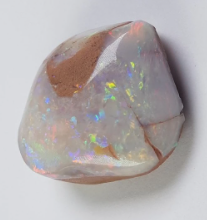
As time progressed and the sea dispersed, various types of clay were formed from these sands, allowing for the shells and bones of these animals to create formations of opal. In some cases these shells (as they were made of calcium carbonate) dissolved in the sand, leaving cavities that could be filled with other minerals (even opal). This ancient inland sea is now long gone, and in its place stands the Australian outback; this allows for miners to dig up the remains of past life, perpetuating the beauty hidden under Australian soil.
Fossils are already scarce within Australia, so it is incredibly rare to find an opalised shell with clarity and vibrant colour. In addition, these artifacts are made rarer by how they are dispersed within Australia; these stones are often found only within small areas, which is unlike other opals (which usually can be found throughout an entire mine). These rare fossils are often sought after by ‘gougers’ (a name given to miners who work on finding valuable opals).
“It’s a truly unique area [Australia]…There’s no place in the world like this, where
you have dinosaurs preserved in beautiful opal.” – Phil Bell, author at the
University of New England in Armidale, New South Wales.
But one question still remains, why go through all the trouble to find a shell? Well, often these rarities are heavily sought after by opal collectors, with opalised shells being high on their list of ‘desirable pieces’. These items are not only coveted for their rarity, but for their unique shape and abstract form; this is especially true if the found opal is part of a fossil, or in a shell, with the prices of such pieces beginning at around $1000 (with crystal opal shells being far more valuable). Often, opal dealers will value the quality of the opal, and then adjust the price to accurately reflect the rarity of the fossil or shell.
Although the transformation to silica has destroyed biomolecular evidence, marrow tissue, blood vessels, capillaries and nerve channels may be perfectly preserved. If the potch is transparent, these features are clearly visible below the surface in opalised bones. A surprising aspect is the opalisation of delicate materials like leaves and even dinosaur skin. Many pieces resemble coprolites, reptilian armour scutes or heavy scales; very occasionally, bone specimens seem to show remnants of tendons or cartilage.
THE MOST EXPENSIVE OPAL?
What’s the most expensive opal? Believe it or not, an opalized fossil! The Virgin Rainbow is known as one of, if not the most expensive opal in the world at over $1 million. It’s actually an opalized fossil of an extinct cephalopod named belemnitida.
COLLECTING OPAL FOSSILS
HOW DOES OPAL FORM?
OPAL FOSSILS AND “MILLIONS OF YEARS”
